
Photographing Brazil’s Pantanal the Unknown Gem
by Reinhard Thomas
November 9, 2016
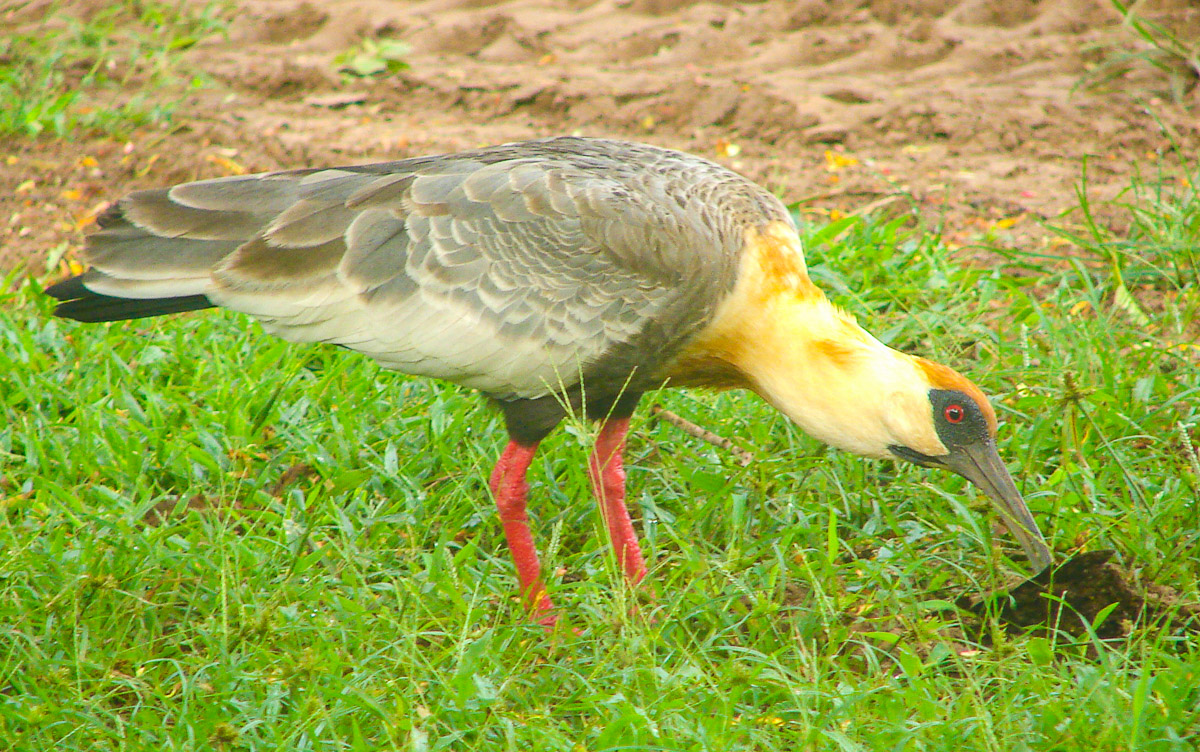
Buff-necked Ibis
Most people know about the Amazon region of Brazil but few ever heard of the Pantanal except for those of you that read the book “The Testament” by John Grisham (published by Doubleday in Feb. 1999); most of the book takes place in this unique region.
 Caiman looking for prey.
Caiman looking for prey.
The Pantanal is the world largest seasonal wetland. It encompasses approximately 180,000 square kilometers, (half the size of the state of Montana) and consists of grassland, forest, rivers and ponds. This spectacular region is located in southwestern Brazil with a small part reaching into Paraguay and Bolivia. Due to the abundance and diversity of the wildlife in the area the Pantanal is often compared to the Okavango Delta in Botswana in Africa.
According to Wikipedia the Pantanal is home to over 1000 bird species, 400 fish species 300 different mammals, 480 reptile species who all share the region with 9000 different subspecies of invertebrates. (That is a lot of bugs!) Including the more than 10 million crocodilians (mainly caimans), the Pantanal has the highest concentration of wildlife on the South American continent.
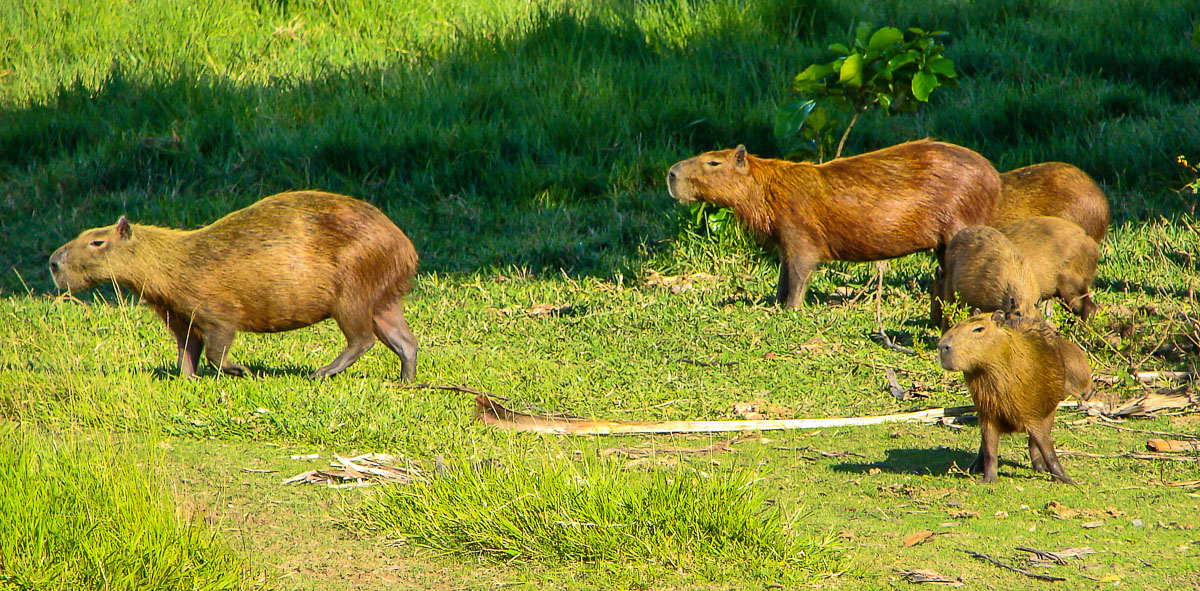 Capybara Family
Capybara Family
Unlike the Amazon region, which is largely lush rainforest, the Pantanal has a lot of open grassland, which makes it easier to spot wildlife.
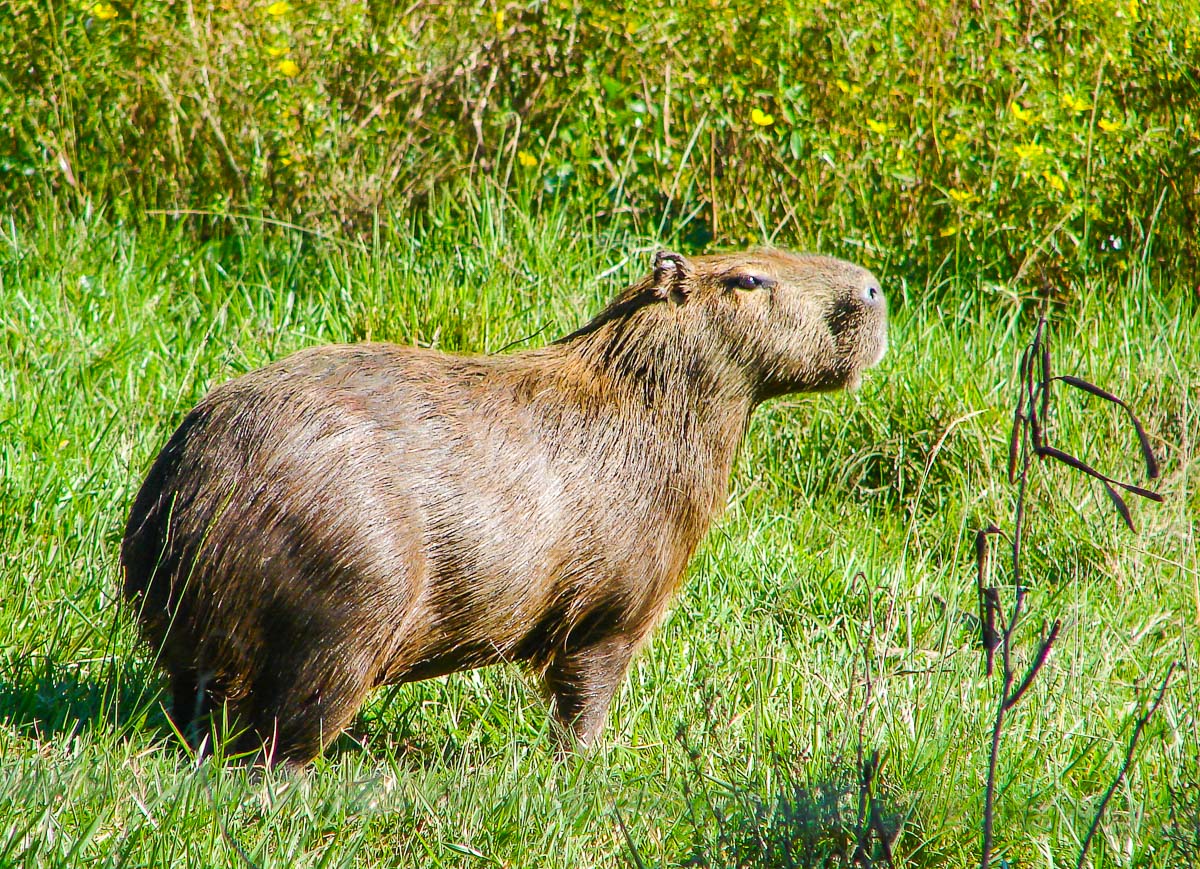
Capybara, the World's largest rodent can weight up to 65 Kg.
The Pantanal is an ideal destination for wildlife photographers where you will have a good chance to spot some of the endangered species such as jaguar, giant river otters, maned wolf, giant anteater and the hyacinth macaw (the world largest parrot). Capybaras, the world’s largest rodents are abundant.
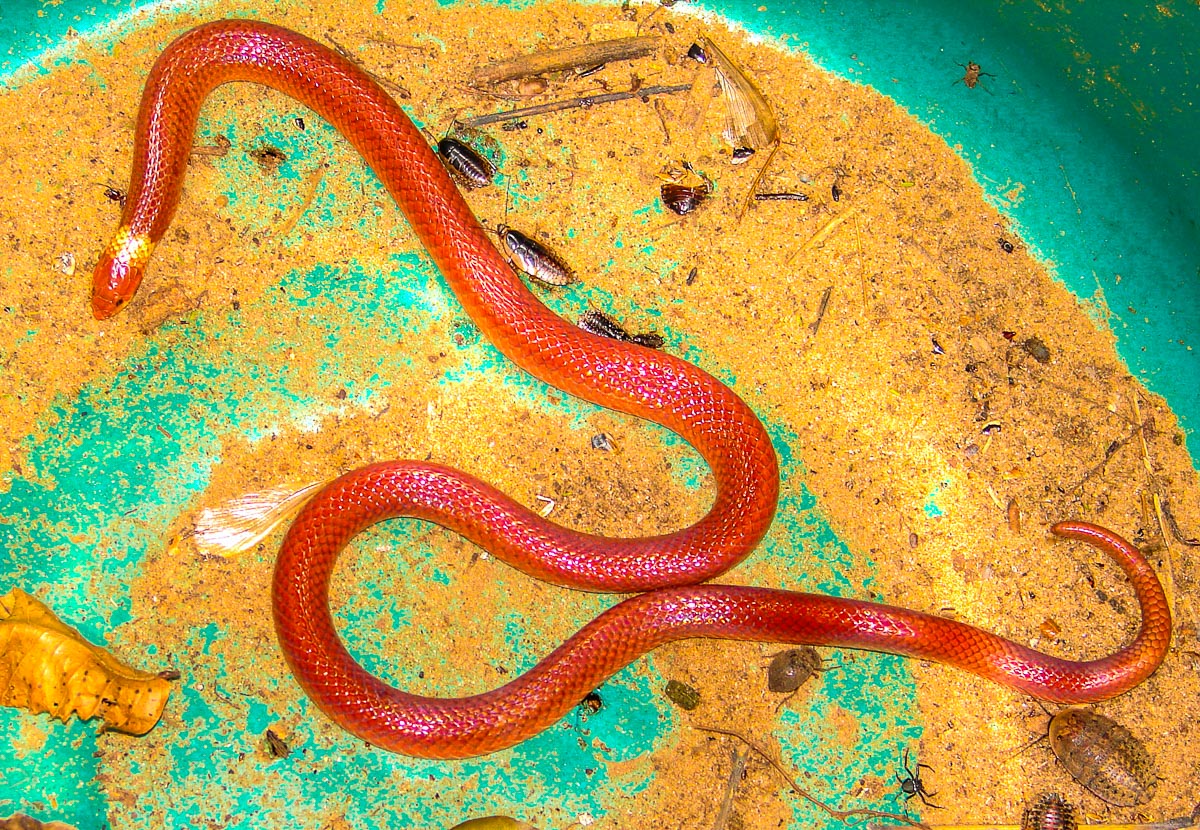
False Coral Snake in one of our traps
Also a stunning location, it does have its challenges. The region is not easily accessible and can be challenging to get to because of the absence of roads and the flooding that takes place annually. The rains typically start in November and last till March and during this rainy season the water level rises 2-5 meters and 75% of the land is flooded. Most animals move to higher elevations, increasing the wildlife density in these areas even more. There are about 100 rivers in the Pantanal watershed with the Paraguay River being by far the largest.

Female Fulvous Shrike Tanager about 18 cm tall
My interest in the area was initially sparked when I read about the Pantanal a few years back. I was eager to visit the area, however since it was not a developed tourist destination I had to find another way to get there. After investigating my options I decided on an opportunity to volunteer with an organization that does research in this area. This organization, together with the University of Sao Paulo are researching the biodiversity of this wetland, specifically working to determine which species and subspecies of amphibians and reptiles are found in the area. We were a group of 5 volunteers from different parts of the world and our mission was to capture amphibians and reptiles, take them to a field lab, and record their morphometric measurements, environmental data and the location where the animal was found. After recording the data we implanted microchips into the animals and released them at the same spot where they were caught. The microchips allow researchers to observe the animal’s movements.

Greater Rhea flightless but they can run very fast.
My trip started with the flight to Sao Paulo, a city of over 21 million people before the journey continued to Campo Grande, Mato Grosso do Sul. This city of about 1.5 million inhabitants (a small city by Brazilian standards) was the meeting point for our group. The next day we drove for about 2 hours to Aquidauana where we boarded a small plane. After we took our seats in the plain we were handed boxes of food and supplies that were sitting on our laps, under us and behind us, until there was not an inch of space left in the plane. Luckily I was still able to look out of the window, and I enjoyed the calm flight over the beautiful southern Pantanal, looking at cattle ranches, lush, green vegetation and meandering rivers and oxbows below us until we landed on a short grass strip along the Rio Negro River. There is no road access to this area of the Pantanal and planes are the only mode of transportation to get in or out.

Hyacinth Macaw
Our home for the next 12 days was the Fazenda Rio Negro, a working ranch, which at one time owned 692,000 acres of land. The ranch had also served as a hunting camp for jaguar hunters during the last century and many old black and white photographs on the walls depict hunters with their trophies.
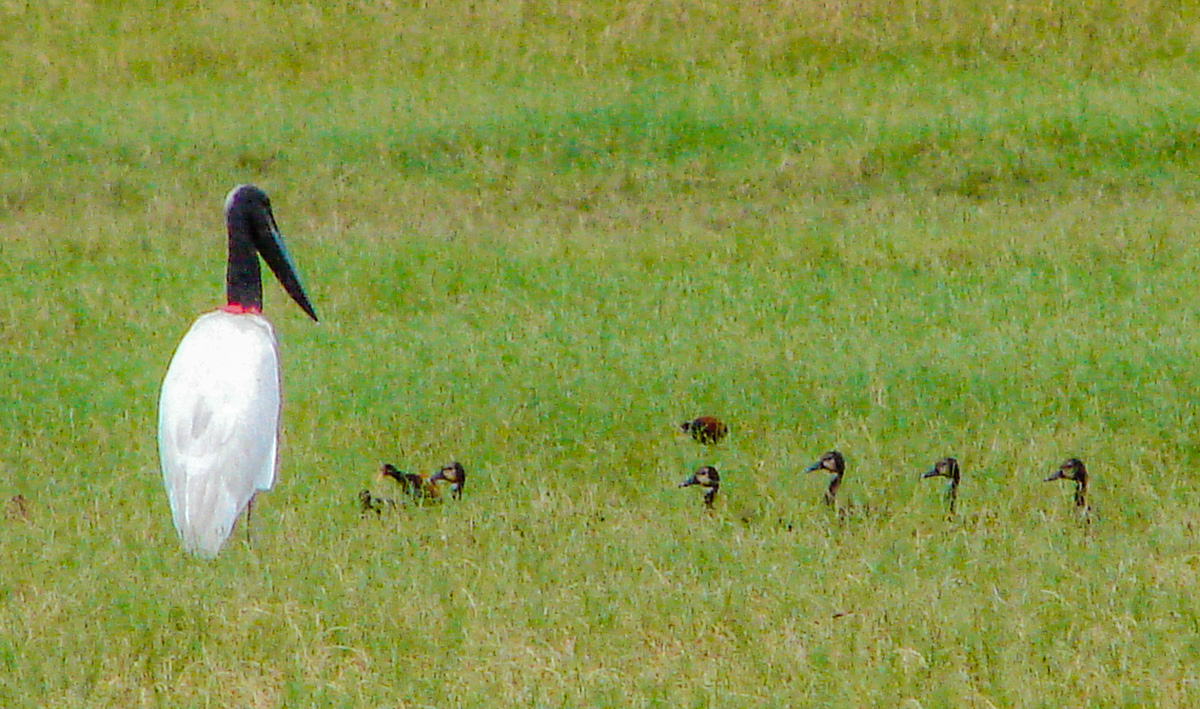
Jabiru Stork with offspring
Upon arriving we all enjoyed a Caipirinha, a Brazilian cocktail made with local sugarcane-based rum, lime and ice before we settled into our “local” accommodation. Small frogs on the walls took care of the mosquitoes and sandbags on the floor along the door kept snakes out. There was no glass in the windows but a mesh kept most of the larger insects at bay.

Left: Cocoi Heron and two Black Vultures. Right: Large Anhinga along the river.
The next day started with our first excursion through the diversified and interesting landscape of the Pantanal. Our transportation was an old Army vehicle from the 1940’s and our Brazilian driver, a farmhand on the ranch, negotiated the sand and mud trails very well with this oversized all wheel drive vehicle. We drove through grassland, stands of tall trees and along salinas (soda or salt lakes) and baias, which are small sweet water lakes. A peccary, several deer and many capybaras crossed our pass, Jabiru storks, ducks and caimans went about their business along the shorelines of the baias and flocks of parakeets and parrots left the trees as our noisy ride went through their normally very quiet territory.

Left: Peccary. Right: Polkadot Treefrog.
We were on our way to set our first pitfall trap in which we would catch amphibians and reptiles as well as a high number of “undesired” creatures such as tarantellas, scorpions and rats which we would release again. Sometimes giant ants (Burchell’s Army Ants) got to the traps before us and then we would find only skeletons of the animals that fell into the traps. These ants travel in large numbers along the forest floor and devour everything in their way. One young lady in our group learned that the hard way. She forgot to duct-tape her pants to her shoes and when she noticed that ants were marching up her leg she was extremely fast out her pants. (She never forgot the morning duct-tape ritual after that!)
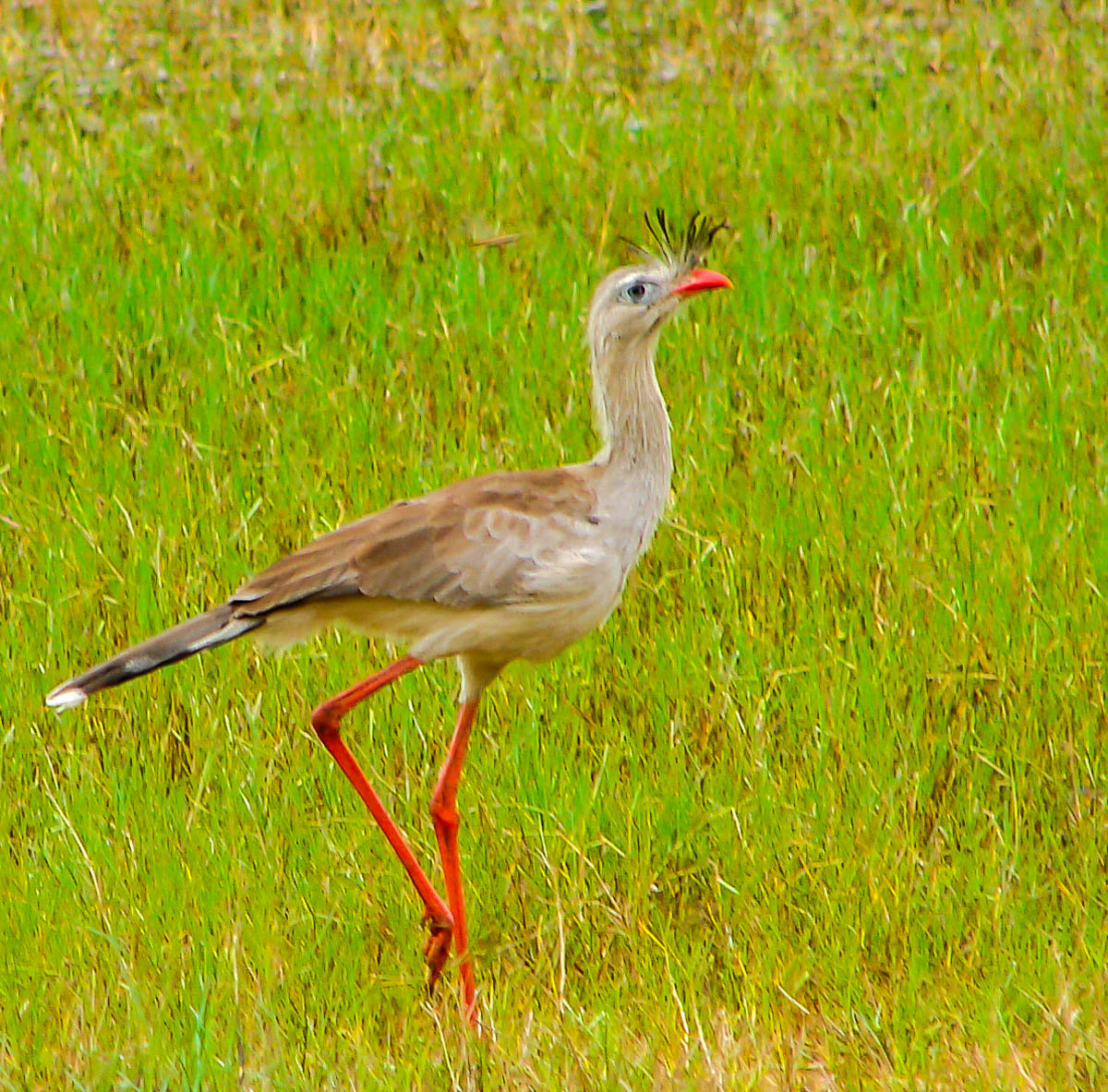
Red-legged Seriema
Not only did we have the Army Ants to contend with, we also had the Giant Hunting Ants (Paraponera Ant). They usually travel alone or in smaller groups but their stings are very painful and I can only compare them to the sting of the scorpions. (I say this from experience, as I was the recipient of several stings when removing the “biters” from our traps). On a positive note, the ants provide plenty of food for the giant anteaters, which live in the Pantanal.
We monitored several traps in different areas and alternated our mode of transportation between the old army truck and a small aluminum boat on the rivers in order to check the traps daily. There was always walking involved because neither the truck nor the boat could get us to the final locations of the traps.

Rufescent Tiger-heron about 70 cm tall
This trip was focused on the research and was no photo safari. This meant that it was not always possible to take a camera to the fieldwork as we often had to cut our way through the jungle with a machete. I was always ‘volun-told” to cut the pass since I was the only male participant in the group. While hacking my way through the bush it was important to pay close attention to my environment because of the unbelievable high number of caimans, the presence of venomous snakes such as the pit viper and coral snake and other creatures that did not appreciate the disturbance.

Parrot Snake
Anacondas are present in the water and on land; Anacondas are not venomous but you still don’t want to meet them face to face because they can strangle you and crash every bone in your body with ease.

Yellow Anaconda in tree
In the first days of our stay our group leader, a Professor from the Sao Paulo University told us that we would go swimming in the Rio Negro River at the end of our assignment. All of us laughed and thought it was a joke because swimming with piranhas, 2.5 meter long Caimans and snakes was not on our bucket list of fun things to do. After seeing these animals close-up on a daily basis and learning about their behavior we accepted them more and more and got closer to animals which we normally perceive as dangerous. However, they are wild animals and caution is still advised; but after learning that piranhas prefer the cooler water close to the bottom of the river and that caimans usually don’t attack unfamiliar creatures (like swimming humans) we actually went swimming in the river and I have the photos to prove it!
Some Caimans are over 8 feet long
This biological rich area had and still has its challenges and problems. In the 1980’s thousands of endangered hyacinth macaws, ocelots, anacondas, jaguars and other animals were caught and sold on the international exotic animal market. Brazil declared commercial hunting as illegal in 1967 but that did not stop the poachers. In the 1970’s they killed as many as 1 million caimans per year in the Pantanal and sold the skins. The hunting finally stopped in 1992 when the Convention on International Trade in Endangered Species banned the export of wild animals and animal parts.

Left: The Caracara belongs to the Falconidae family and is often seen feeding on the ground. Right; Water hyacinth in the Rio Negro.
Commercial farming of soybeans, cotton and sugarcane has started to claim some of the highlands of the Pantanal region and posses a thread to the whole watershed because of fertilizer run off. Ranching is part of the Pantanal for many generations and continues to play an important role in the region. However, the cattle density is low because 75% of the grazing land is under water for several months every year and therefore the ranchers need a minimum of 7 acres per cow.
In an effort to protect the endangered jaguar, the Government pays some compensation to ranchers for cattle that are killed by Jaguars, but some ranchers still hire jaguar hunters with their dogs and it is believed that every month these hunters kill 10-20 jaguars. It is not known how many Jaguars are existing in the Pantanal since these secretive, nocturnal animals are difficult to count, but it is known that the Pantanal is home to the largest and healthiest jaguar population in the world. Biologist are now equipping a number of these solitary animals with radio collars to determine if the population is stable, shrinking or growing.
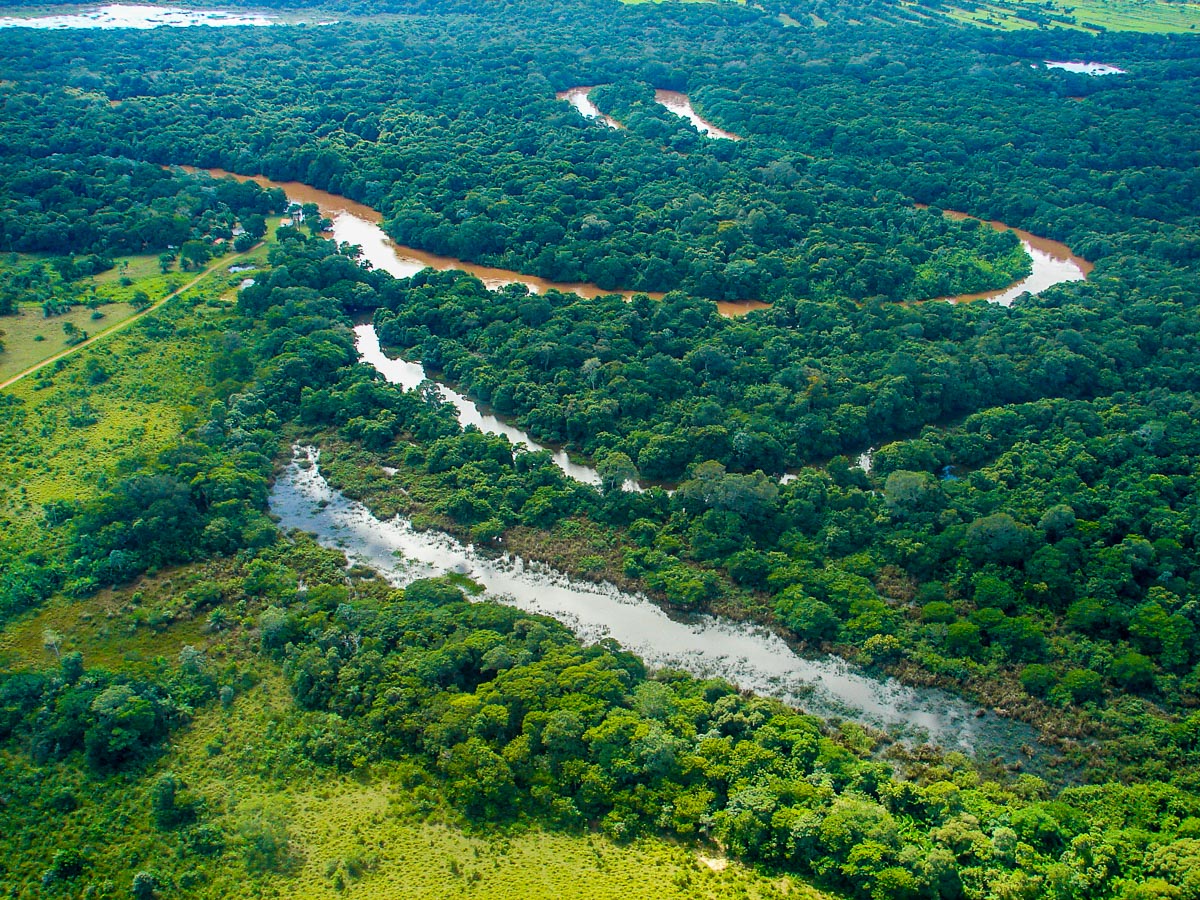
View out of small plane over the Pantanal
On a positive note, many of the rangers in the Pantanal are now convinced that ecotourism is the future of this region. It will hopefully result in “shooting” the jaguars with cameras only and will create stable and rewarding jobs for the rangers and their families. Several ranches are also converting into ecolodges to accommodate the expected eco-tourists.
I hope that one day I will have the chance to return to the beautiful Pantanal with my camera to document its biodiversity and rich animal life.

Our group with land transportation
Note: All photographs were taken with an older Sony DSC-H1 Cyber-Shot, 5.1 megapixel camera in JPEG. The camera has 12X optical zoom, 6.0 – 72mm, f 2.8-3.7 . Some of the pictures were taken with a Sony VCL-DH1758 X1.7 Tele Conversion Lens (36 – 432mm when converted to a 35mm still). I like this camera when traveling because of its very light weight, compact design and the relative good optic.
Authors Biography & Contact Information

Reinhard Thomas is a photographer living in Calgary. He is specialized in travel photography. Between travels he creates animal and landscape images and has a comprehensive collection of barn and grain elevator pictures.
Previous articles by Reinhard Thomas -
Photographing in the Western Prairies
Photographing Madagascar
Photographing Cambodia, Kingdom of Wonder
Email: thomasrdu@telus.net
Web site: www.rthomasphotography.org
Phone: 403-239-3278
Click on the buttons below and share this site with your friends